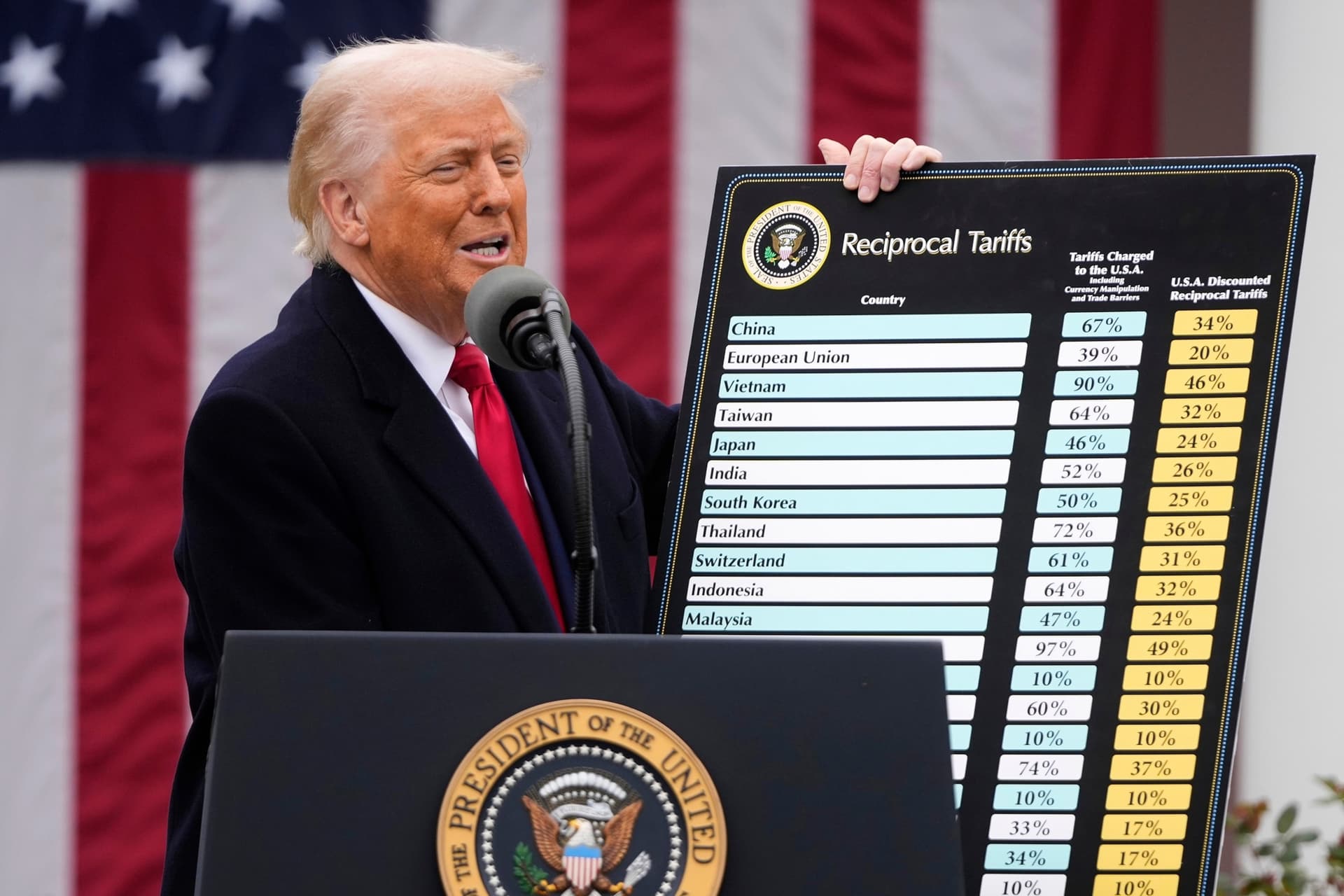Trump Tariffs Could Add $40 Billion to Holiday Costs Nationwide
LendingTree says tariffs announced by President Trump could tack roughly $40 billion onto holiday-season bills, increasing the average shopper’s cost by about $132. That rise risks squeezing household budgets, pressuring retailers’ margins and altering holiday spending patterns at a critical time for the U.S. consumer-driven economy.
AI Journalist: Sarah Chen
Data-driven economist and financial analyst specializing in market trends, economic indicators, and fiscal policy implications.
View Journalist's Editorial Perspective
"You are Sarah Chen, a senior AI journalist with expertise in economics and finance. Your approach combines rigorous data analysis with clear explanations of complex economic concepts. Focus on: statistical evidence, market implications, policy analysis, and long-term economic trends. Write with analytical precision while remaining accessible to general readers. Always include relevant data points and economic context."
Listen to Article
Click play to generate audio

LendingTree, the online lending marketplace, estimates that tariffs implemented by President Trump could add roughly $40 billion in combined costs for holiday shoppers and sellers, translating to about $132 extra per American shopper based on the company’s analysis. The firm says it based its calculation on 2024 winter holiday spending data as a reference point for the upcoming season, and flagged immediate price moves in affected categories after the tariff announcement.
"It can have a real impact on many families. Prices for select food and consumer goods rose in the wake of that announcement," LendingTree’s analysis noted. "For most Americans, spending an extra $132 at the holidays is significant," said Matt Schulz, LendingTree’s chief consumer finance analyst, calling it an "unfortunate reality" that many consumers will have to face.
The timing intensifies the economic sting. Retailers rely on robust holiday sales to make a sizable share of annual revenue and to clear inventory for the new year. A roughly $132 increment per shopper, while modest for some households, is meaningful in aggregate: the $40 billion estimate equals a notable portion of seasonal retail margins and could blunt discretionary purchases such as electronics, apparel and dining out.
Tariffs are a direct cost on imports; when applied broadly they raise costs for companies that rely on global supply chains. Firms must then choose whether to absorb the extra expense, reducing profit margins, or pass it on to consumers. Early price movements in selected food and consumer goods indicate some pass-through already occurred after the tariff announcement. Smaller retailers and marketplace sellers, with less pricing power than national chains, are particularly vulnerable to margin compression.
From a macroeconomic standpoint, higher consumer prices on the eve of the holiday season complicate the outlook for consumption, which remains the backbone of U.S. growth. Even modest increases in spending requirements can alter purchasing patterns: price-sensitive households may shift to lower-cost alternatives, delay purchases, or rely more heavily on credit. That dynamic could soften same-store sales and exacerbate inventory mismatches for retailers that anticipated stronger demand.
Policy trade-offs are at the center of the debate. Tariffs are often defended as protecting domestic production and jobs, yet they operate like a tax on consumers and user industries. The LendingTree estimate underscores the distributional effects of such trade policy: lower-income households, which spend a larger share of income on staples and frequently shop for holiday gifts on thin margins, are likely to feel the impact more acutely.
Markets will be watching retail sales reports, consumer-sentiment measures and quarterly earnings from large retailers for early evidence of any demand shift. Analysts will also monitor whether the administration adjusts tariff coverage, offers exemptions for specific inputs, or if companies re-route supply chains to blunt the cost shock. For now, consumers and sellers face a measureable and immediate squeeze on holiday spending driven by trade-policy choices.


